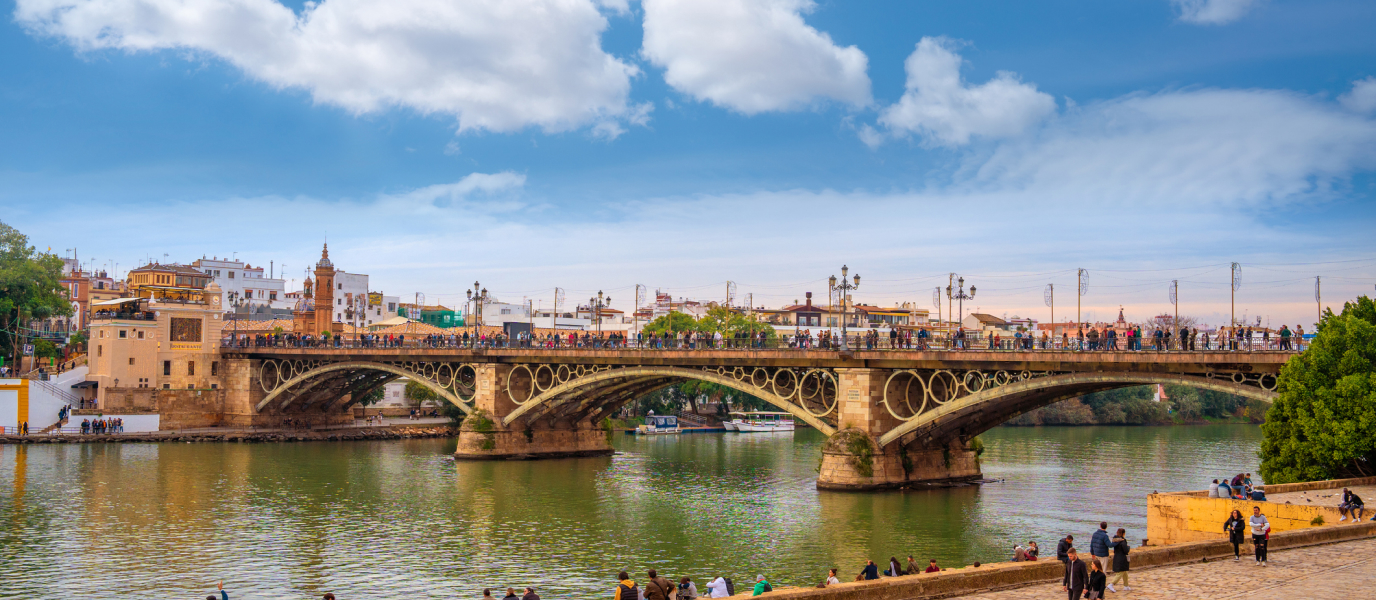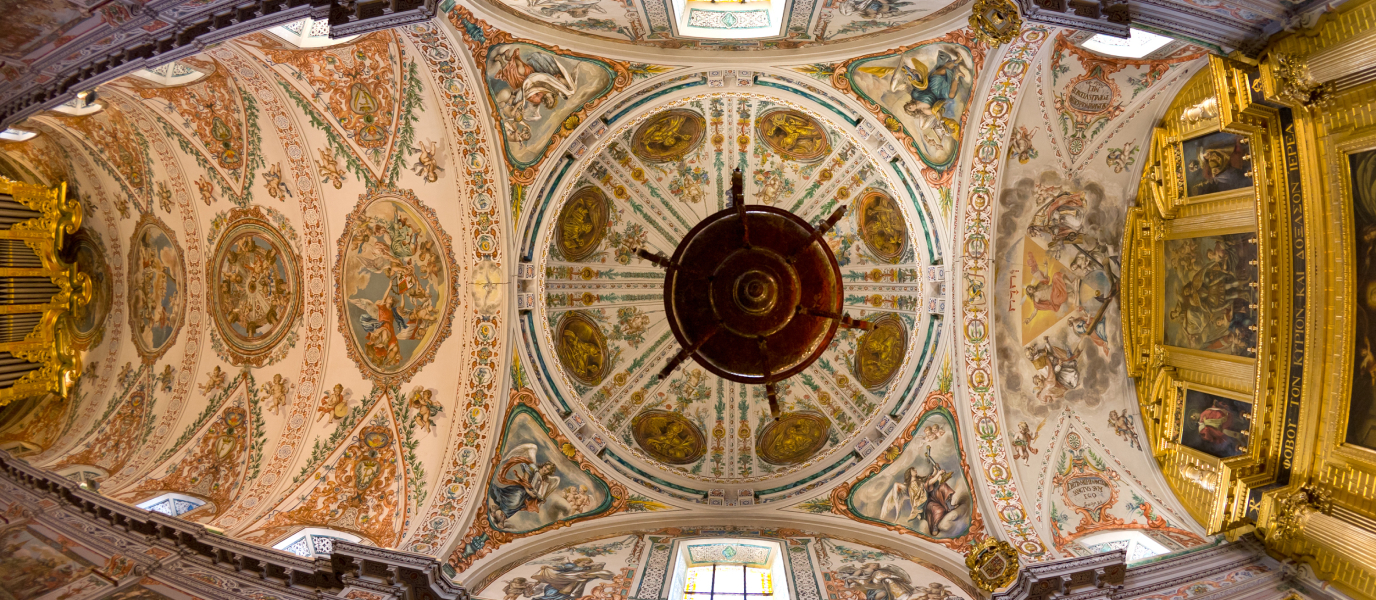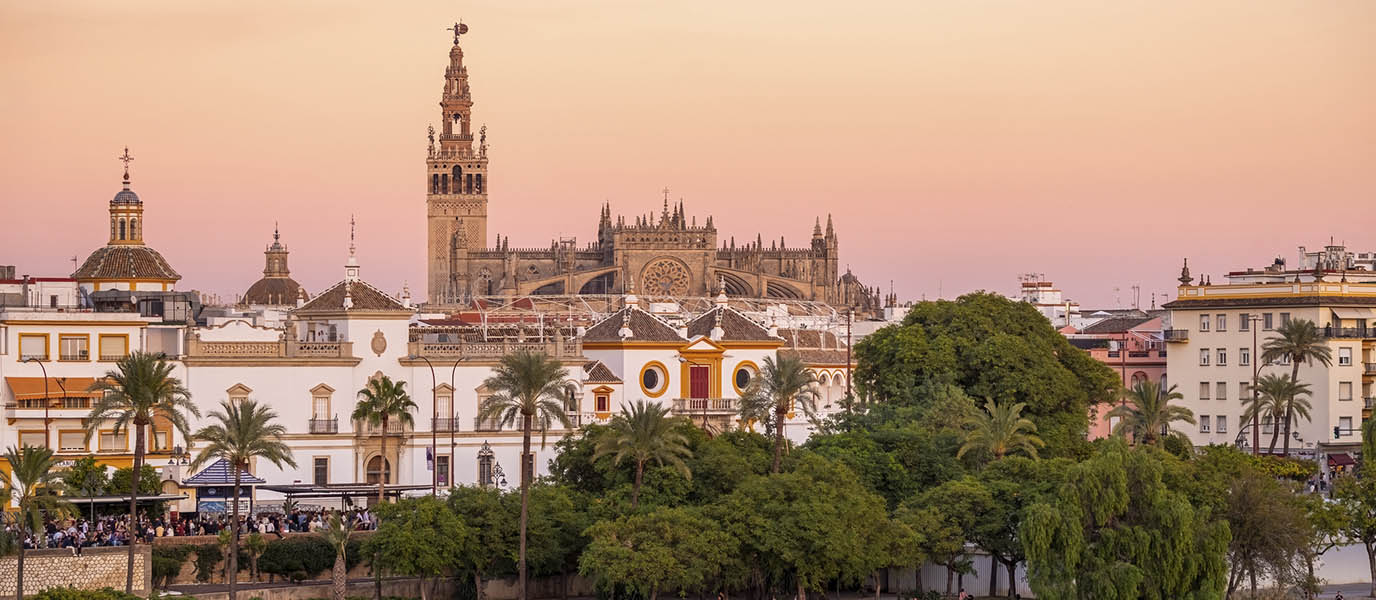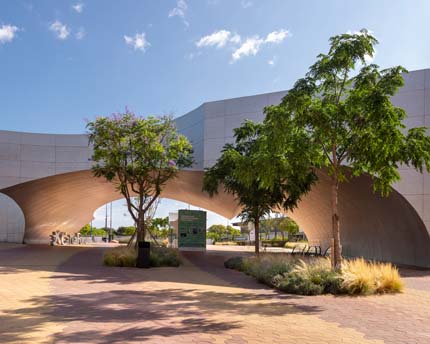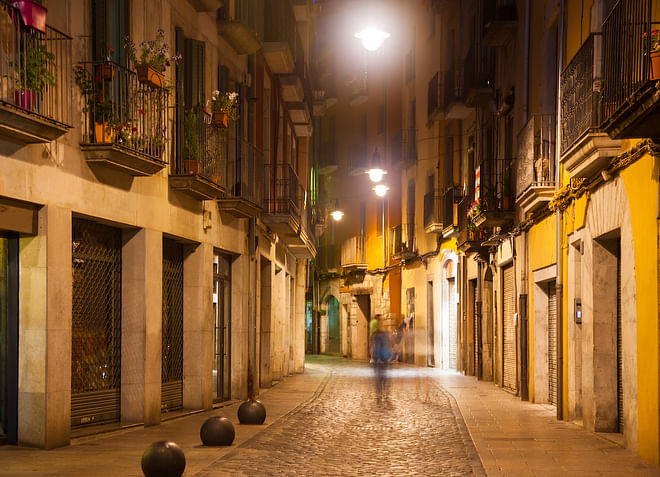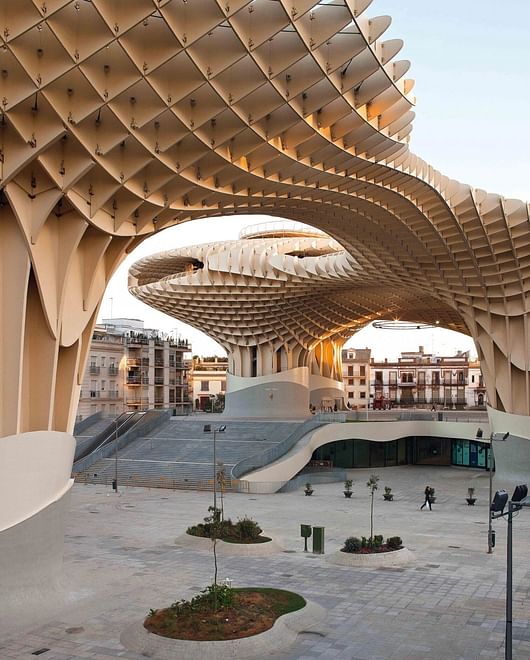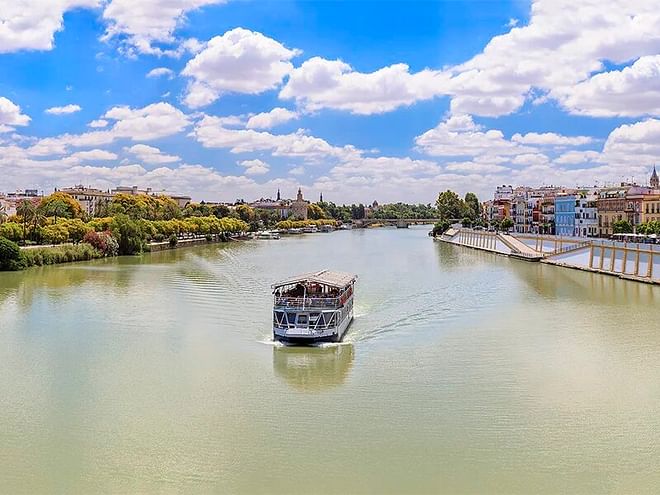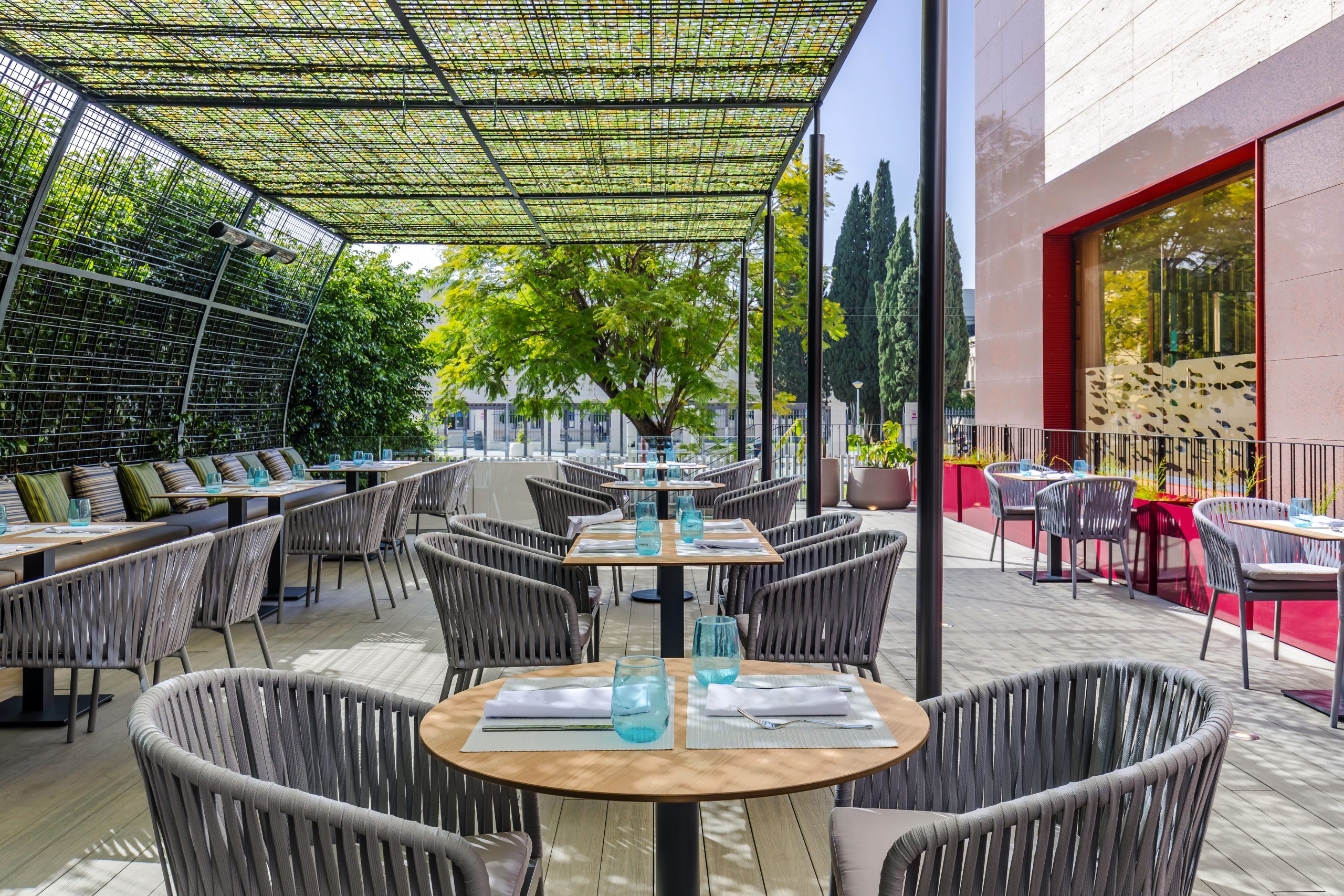The history of Triana bridge, at least as a solid construction, is relatively recent. Until the nineteenth century Seville did not have a stable bridge connecting its historic centre with the Triana neighbourhood. In fact, there was no construction of the kind along the Guadalquivir river between Córdoba and its estuary in Sanlúcar de Barrameda (Cádiz).
Aside from sailing, for hundreds of years (from the eleventh century), both parts of Seville were only connected by way of a so-called ‘boat bridge’. This consisted of 13 wooden boats joined together with chains, upon which planks were placed to facilitate the transit of pedestrians, pack animals and carriages.
This unstable system was at the mercy of the wayward and habitual flooding of the Guadalquivir river and the wear inherent to daily traffic. The city depended on this rudimentary system until people and authorities had had enough and in late 1845 work was begun on the bridge that stands today, which was finally opened in 1852.
Isabel II bridge: its real name
Work on the current Triana bridge took place during the reign of Queen Isabella II, from whom its official name originates. The initial project was designed by the French engineers Ferdinand Bernadet and Gustave Steinacher, who took inspiration from the original Pont du Carrousel over the river Seine in Paris, which no longer stands today but which defined a highly popular style in this type of constructions, known as Polonceau.
As previously mentioned, construction of Triana bridge lasted over seven years, having encountered difficulties related to soil settlement due to the sandy nature of the banks of the Guadalquivir. In fact, during construction, the type of stone that was initially to be used, originating from San Fernando (Cádiz), was changed in favour of a sturdier one from Matasanos (Badajoz). As time passed the work was to encounter more delays due to financial and administrative reasons.
What is Triana bridge like?
More than a century and a half later, Triana bridge has a somewhat different appearance to its original construction. The metal arches beneath the bridge no longer have any kind of structural purpose and are purely decorative. That said, the arches make it one of the oldest cast iron bridges in Spain.
The total length of the bridge is 154.5 metres, with a width of 15.9 metres and a maximum height of 12 metres from its base. It is formed of three metal sections each spanning 45 metres, in addition to sections of dressed stone.
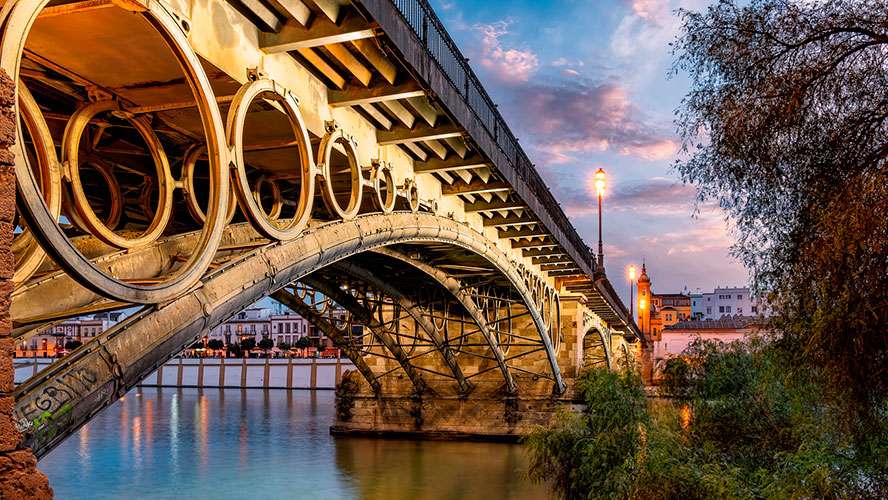
The deck (welded) has been replaced on several occasions over time, owing to the damage suffered due to wear. The last time, in 1977, a type of construction was implemented that freed the metal spirals and arches below it from any kind of structural function, which means they are now purely decorative.
Interesting facts about the Triana bridge
The bridge has suffered considerable damage throughout history. Some of the most significant was in 1874 due to a ship with an English flag, which collided with the structure whilst being towed by a worker of the Port of Seville.
Triana bridge is not unique in the world. In fact, in the year 1951, a bridge was opened with the same name upon the waters of Benito river in Equatorial Guinea.
The old passenger station of the river route between Seville and Sanlúcar de Barrameda (opened in 1924) on the Triana side of the bridge is today one of the most well-known restaurants in the neighbourhood: María Trifulca, known by almost everyone as El Faro.
The bridge’s strategic location and the need to connect both banks of the city turned the original pontoon of boats into the protagonist of two important battles. These took place during the Reconquest of Seville, in 1248, and during the Peninsular War, in 1812, the latter known as the Battle of Triana Bridge.
What’s more, the bridge was declared a National Historic Monument in 1976.
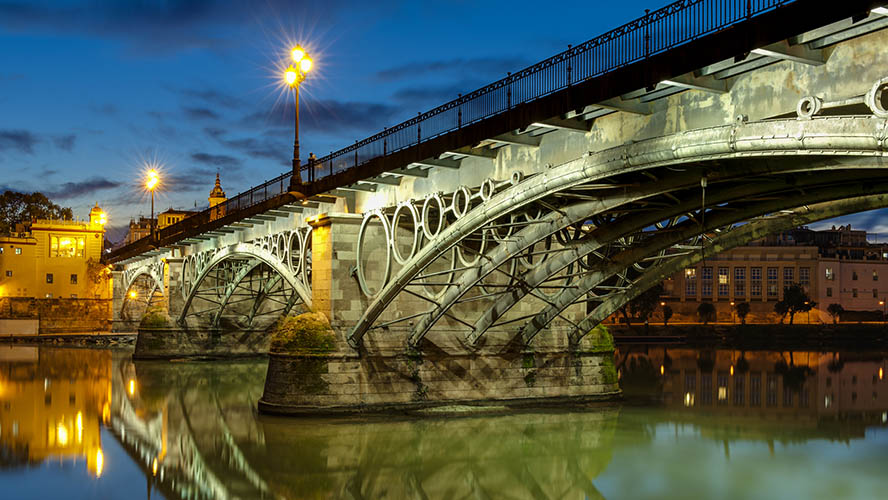
A Seville icon
Beyond purely technical aspects, Triana bridge is a true icon of the city. First of all, due to its unmistakeable location, situated halfway between two—equally seductive—Sevilles. Secondly, thanks to its beauty and scenery, offering one of the best panoramas in the city. With that in mind, anyone lucky enough to be in Seville during the Holy Week celebrations, mustn’t miss the procession of some of the most representative religious images from this popular festival, such as that of Esperanza de Triana or that of El Cachorro.
Thus, Triana bridge is more than just a thoroughfare; it is one of the many monuments that make up Seville’s extensive heritage. During festivities local people like to decorate it, imbuing it with a sense of life, above all during the Velá de Santiago y Santa Ana, when trianeros (Triana neighbourhood inhabitants) cover it with garlands and lanterns.
Together with the parallel Sant Telmo bridge, Triana bridge is a must-see for anyone who wants to get a feel for Seville. We recommend heading there at dusk when the city lights begin to turn on and reflect in the waters of the river, illuminating the bridge. It becomes the most striking vantage point in the city, and a perfect excuse for crossing the river towards Calle Betis (vincular a URL correspondiente), where you can behold the bridge itself from the terrace of a bar or restaurant, in addition to sampling the best of Seville’s cuisine.




































































